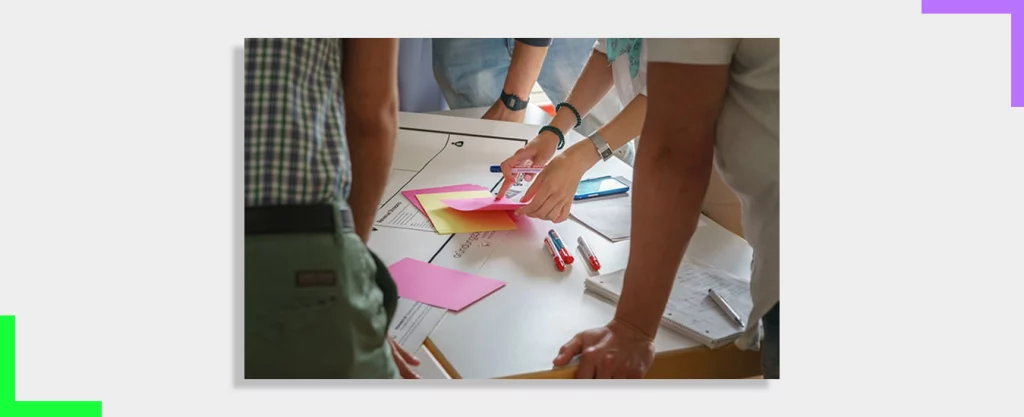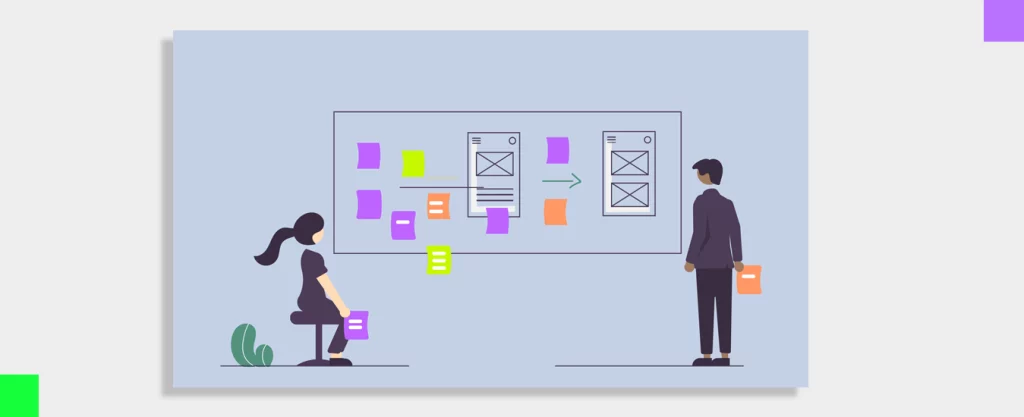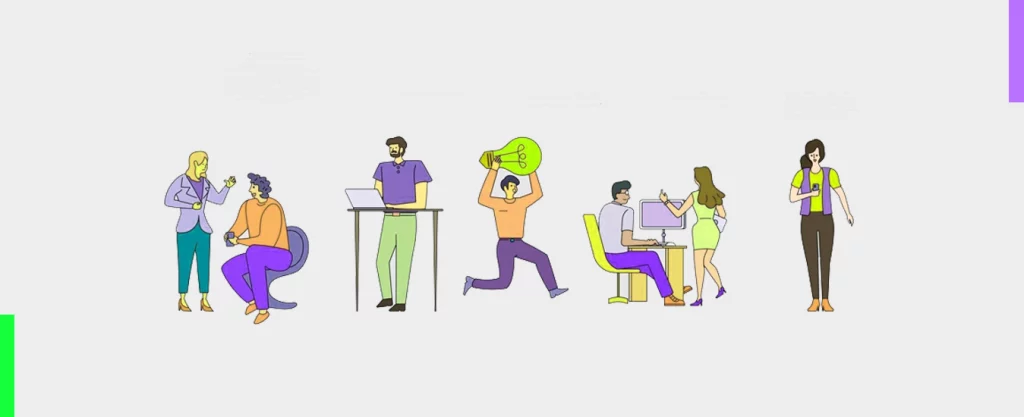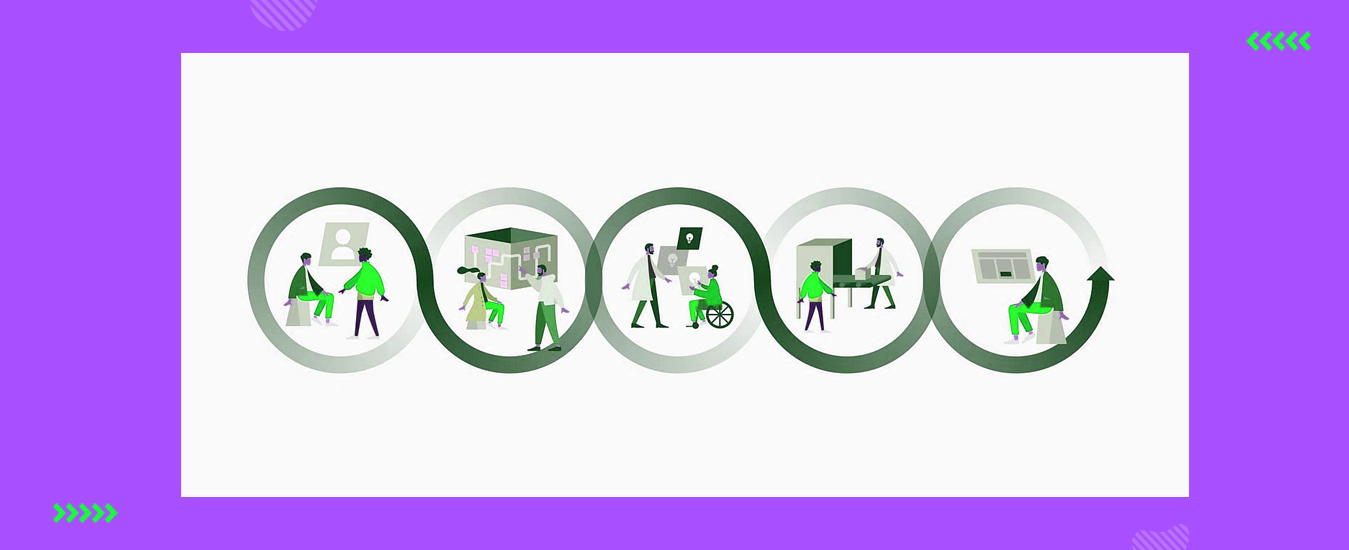Successful design teams always cut through the noise and cater to their audience’s requirements without even launching the product. How? They conduct sprint workshops and have found their shortcut to receive end users’ feedback before the product hits the market. That’s the whole purpose of sprint workshops. To develop ideas together, develop a working prototype, test it across a selected audience, and learn feedback.
These sprint workshops were brought to light by Google Ventures in 2010. Their design partner Jake Knapp ran sprints keeping the customer’s journey and pain points in mind to get complicated tech products across the market. That proved to be effective for them and many successful design teams followed suit. This isn’t just for new product launches. It also works when brands try an overhaul, or when designers are left out of ideas, or when there is too much noise aka opinion clashes.
What are Sprint Workshops?

These are week-long activities where designers and many other stakeholders from different functional areas collaborate, brainstorm possible solutions for a specific problem, and storyboard their ideas. All these ideas are developed into a high-fidelity prototype which is pre-tested with the help of a few end-users. According to their feedback, further steps are planned that suggests the success or the failure of the sprint workshop.
These sprint workshops are critical to getting the pulse of a diversified audience and their dynamic requirements.
Before we see how design thinking plays a role here, let us understand how sprint workshops happen in detail.
Stages of Sprint Workshops

Sprint workshops have to be planned between Monday and Friday, allocating a specific activity to each day. But before that, you need the right sprint team to be onboarded. Form a team that can think of design from the customers’ point of view. Build a group of subject matter experts, designers, helpers, notetakers, interviewers, and many others and assign a task to each one of them. Find a facilitator who can guide the group throughout and get the best out of everyone. Get necessary supplies ready for them from healthy snacks to go all at it to stationery supplies like markers, post-it notes, notepads, and whiteboards. Create an inspirational playlist to uplift the josh in the air. Block every sprinter’s timelines for the whole week. Make sure everything is in place to facilitate the sprint workshop.
Here is the breakdown of the sprint week.
Monday – narrowing down on the problems to be fixed, setting goals, clarifying roles, and mapping customer journeys for the dedicated problem and its solution.
Tuesday – Teamwork now becomes individual assignments. Each one of them storyboards their own ideas and vision to solve the problem. Let them take hold of boards and ramble as much as they can until they come to their own conclusions.
Wednesday – The team is back together now. With the best outcomes of everyone forms a single idea that the whole team finds workable. Storyboard the final idea.
Thursday – Let the prototype designer create a high-fidelity, working prototype that can be shared to get the users’ feedback.
Friday – It’s feedback time. Get an interviewer ready who can capture the first-hand, uncontaminated opinion of a sample audience. Have a minimum of five users for stable feedback.
End of sprint workshop. What will you get in the end? A successful idea that flies with the targeted user, a semi-successful plan that needs more improvement, or an absolute failure that gives a clear picture of what must never be attempted.
So it’s clear that sprint workshops expedite your time to market. It simplifies the product and design lifecycle with fewer phases. Also, you get quick, actionable feedback that you can bring back to the board to create something even more powerful. It reduces the number of mistakes and attempts to hit the arrow right on the dartboard.
In this whole process, what role does design thinking have to play?
Design thinking is the methodology that sprinters must adopt to improve the chances of the sprint workshop’s success.
Since sprint workshops are time and energy consuming (think of all of the high-level collaborations and mad-level scribbling). So, facilitating a fair amount of success should be a given to justify the time and efforts spent, which is why design thinking has to be at the core of the sprint workshops.
Why is Design Thinking Important?

Here are the ways in which design thinking plays a role in sprint workshops.
Brainstorming the best
A sprint workshop is where you can have all the crucial decision makers into the picture. This includes designers, developers, customer success teams, marketers, etc, each one of them with their own perspectives. With the design thinking approach, they can better the brainstorming process and solve complicated problems faster. Each one can come up with better ideas that are targeted towards goals.
Imbibes empathy into the process
To be user-centric, you must be able to empathize with them and stand in their shoes. This is when you create or modify a product to solve their problems. Design thinking is all about this and when it’s a part of your sprint workshop, you reduce the number of iterations it takes to create the best user-centric solutions. In fact, you can make your first design sprint workshop successful by getting the most satisfactory feedback from the test audience.
Brings stakeholders to the same page
Design thinking sprint workshops get everyone on the same page even though they are from different backgrounds. Start the sprint workshop by sharing design thinking philosophies. This way you can bring everyone’s thought process in line even though their ideation and creativity levels are different. This unison is much required when you have to run effective sprints with different types of professionals.
Gets the right questions flowing
Only when you can ask the right questions, can you ideate the most-needed, innovative solutions that the world needs to be solved. This is the role of the facilitator who puts on users’ shoes, shoots concerns and problems across the hall, and gets everyone aware of it.
Ability to narrow down the best possible outcomes
When you start brainstorming based on solutions that users are seeking, you can easily map the relevant ideas. These ideas can turn into ideal POCs from which you can narrow down the most suitable solution to prototype. This is possible with a design thinking approach.
Final Thoughts
Facilitating a sprint workshop that ends with successful solutions is itself a big task. It needs a whole bunch of people to commit towards the goals and give their all till the end. Design thinking is the sauce that gets these brewing ideas from pan to plate for the world to see.
Wondering how you can conduct successful design sprint workshops? Say no more, as you have landed in the best hands. Yellow Slice offers sprint workshops as a service where we work closely with our customers, extract the right information, and execute it like a pro. Get the best product out, spending the least amount of energy and effort as we are here to do it for you, together with you.
Whether it is about running sprint workshops or designing the best customer experiences, we have carved our special place in all of these. Send us your requirements and we will get back to you.
FAQs about Design Thinking
What is design thinking?
Design thinking is a five-stage process where you brainstorm, prototype, and iterate to push the best product outside, keeping users’ expectations as the priority.
Who should run a design sprint?
Design sprints must be conducted by facilitators or hosts. They should be the frontrunners of the show, keeping everyone together and moving towards the goal.
What are the principles of a design sprint workshop?
The major principles of design sprint are this. Doing it together and including as many stakeholders as possible while unleashing the best ideas that customers would find relatable and worthwhile. Drawing tangible outcomes rather than indulging in pointless discussions among teams. And putting user experience over creative outcomes.


